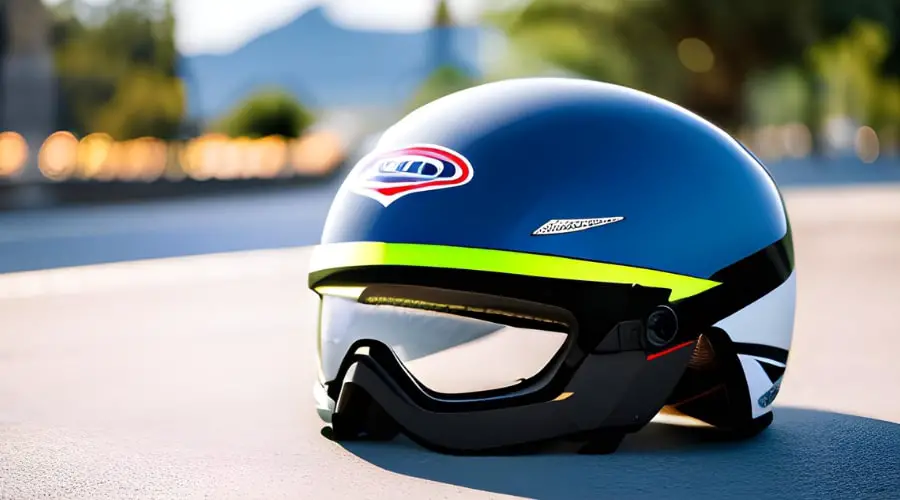As a cyclist, one of the most critical pieces of safety equipment you’ll need is a properly fitting bicycle helmet. Wearing the right size helmet can significantly reduce the risk of head injuries in case of an accident. However, many people are unsure about how to find the perfect size and fit for their heads. In this article, we will guide you through the process of measuring your head, understanding helmet sizes, adjusting your helmet for the perfect fit, and exploring different helmet styles. So, let’s dive in and learn how to find the ideal bicycle helmet size for you.

Importance of a Properly Fitting Helmet
A bicycle helmet is an essential piece of safety equipment for any cyclist, no matter the experience level. A properly fitting helmet reduces the risk of head injuries by as much as 85% in the event of an accident. So, how can you ensure you have the right size helmet for your head? In this article, we’ll walk you through the process of measuring your head, understanding helmet sizes, and adjusting your helmet for the perfect fit.
Measuring Your Head for a Bicycle Helmet
Tools You’ll Need
To measure your head accurately, you’ll need the following tools:
- A flexible measuring tape or a piece of string
- A mirror or a friend to help you take the measurement
- A pen and paper to record your measurement
Step-by-Step Measuring Process
Follow these simple steps to measure your head for a bicycle helmet:
- Stand in front of a mirror or ask a friend to help you.
- Wrap the measuring tape or string around your head, about 1 inch (2.5 cm) above your eyebrows.
- Make sure the tape is level and snug, but not too tight.
- Record the circumference of your head in inches or centimeters.
- If you used a string, measure its length with a ruler and record the result.
Bicycle Helmet Size Chart
Understanding Helmet Sizes
Now that you have your head measurement, you can refer to a bicycle helmet size chart to determine your helmet size. Most manufacturers provide size charts on their websites or product packaging. Helmet sizes typically come in Small, Medium, Large, and sometimes X-Large.
How to Use the Size Chart
To use the size chart:
- Find your head measurement on the chart.
- Note the corresponding helmet size.
- Keep in mind that different brands may have slightly different size charts, so always refer to the specific chart for the helmet you’re interested in.
Bicycle Helmet Size Chart in a table
Here is a Bicycle Helmet Size Chart in a table format. It contains the head circumference ranges in both centimeters and inches, along with the corresponding helmet sizes (Small, Medium, Large, X-Large). Please note that sizing may vary slightly between manufacturers, so it is always best to refer to a specific brand’s size chart when available. Make sure to measure the circumference of your head just above your eyebrows for the most accurate sizing.
| Helmet Size | Head Circumference (cm) | Head Circumference (in) |
|---|---|---|
| Small | 51 – 55 cm | 20 – 21.65 in |
| Medium | 55 – 59 cm | 21.65 – 23.23 in |
| Large | 59 – 63 cm | 23.23 – 24.80 in |
| X-Large | 63 – 65 cm | 24.80 – 25.59 in |
Remember to choose a helmet that fits snugly on your head and always adjust the straps for a secure fit. A properly fitted helmet can significantly reduce the risk of head injuries in case of a cycling accident.
Adjusting Your Helmet for the Perfect Fit
Once you’ve determined your helmet size, it’s essential to adjust it for a snug and comfortable fit. Here are some key aspects to focus on:
Helmet Straps
- Put on the helmet, ensuring it sits level on your head, covering your forehead.
- Adjust the chin strap so that it forms a “V” shape under each ear.
- Fasten the buckle and tighten the strap until it feels snug but not uncomfortable.
- You should be able to fit one or two fingers between the strap and your chin.
Internal Padding
Most helmets come with removable foam pads to provide additional comfort and customization. Use these pads to achieve the right fit:
- Add or remove pads as needed to ensure the helmet sits snugly on your head.
- Pay attention to pressure points, which may cause discomfort during a long ride.
Rear Adjustment Dial
Many helmets have a rear adjustment dial that allows you to fine-tune the fit:
- Turn the dial clockwise to tighten the helmet or counterclockwise to loosen it.
- Make sure the helmet doesn’t wobble or move around on your head.
Trying on Different Helmet Styles
There are various helmet styles designed for specific types of cycling. While the fitting process remains the same, you might want to try different styles to find the one that suits your needs best.
Road Bike Helmets
These helmets are lightweight and well-ventilated, providing excellent airflow for long, hot rides. They often have a streamlined design with few protrusions to minimize air resistance.
Mountain Bike Helmets
Designed for off-road cycling, mountain bike helmets provide extra coverage and protection, particularly around the back of the head. They also have a visor to shield your eyes from the sun, branches, and debris.
Commuter Helmets
Commuter helmets prioritize comfort and practicality, with features such as integrated lights and a more casual aesthetic. They are suitable for everyday riding and short trips.

When to Replace Your Bicycle Helmet
Even if your helmet hasn’t been involved in a crash, you should replace it every three to five years due to the natural deterioration of materials. If your helmet has sustained an impact, replace it immediately, even if there’s no visible damage.
Related: How to Lock a Thousand Helmets on a Bicycle
FAQs:
Q1: Can I wear a hat under my bicycle helmet?
A: While it’s possible to wear a thin hat or skullcap under your helmet, ensure it doesn’t affect the helmet’s fit or position on your head.
Q2: How do I know if my helmet is too tight?
A: If the helmet feels uncomfortable, leaves marks on your forehead, or causes headaches, it’s likely too tight.
Q3: Can I use a multi-sport helmet for cycling?
A: It’s best to use a helmet specifically designed for cycling, as it meets safety standards and provides the appropriate protection for the activity.
Q4: Do all helmets fit the same way?
A: No, different helmet brands and styles may have slightly different fits. Always try on a helmet and make adjustments to ensure it fits properly.
Q5: How often should I check my helmet’s fit?
A: Regularly check your helmet’s fit, particularly if you’ve changed hairstyles or if the helmet has been exposed to extreme temperatures. A well-fitted helmet is essential for optimal safety and comfort during your rides.
Conclusion
Finding the right size bicycle helmet is crucial for your safety and comfort. Measure your head, consult the manufacturer’s size chart, and make the necessary adjustments for a perfect fit. Don’t forget to try different styles and replace your helmet when needed.
Helmetslab is a website that focuses on providing in-depth reviews and information about different types of helmets, including motorcycle helmets and others helmets. I am writing a post with proper research on the info that helps helmet users.
